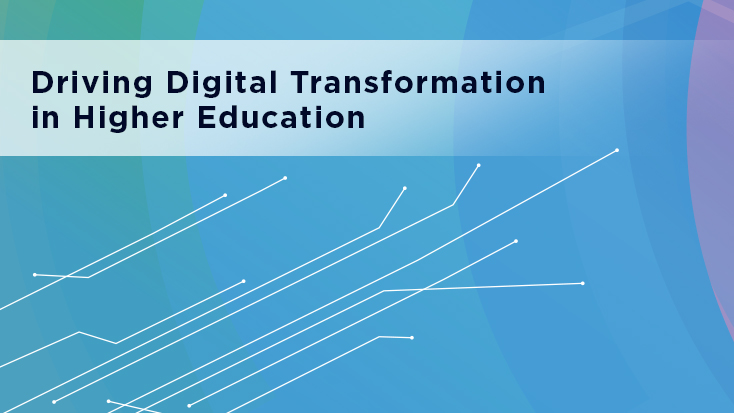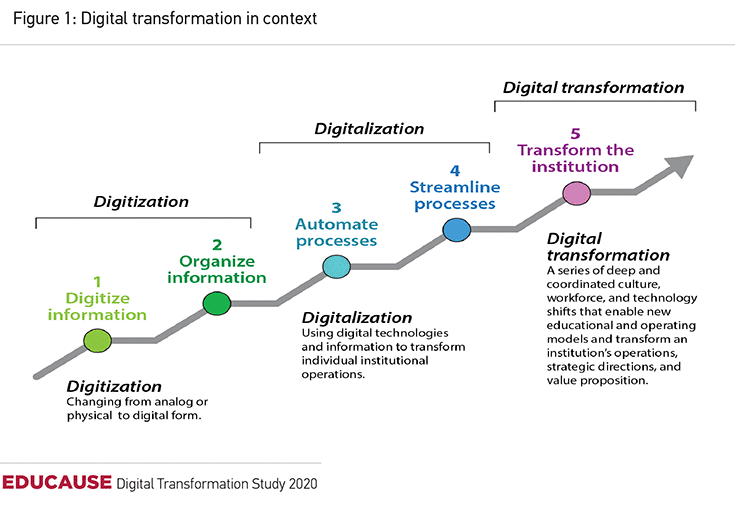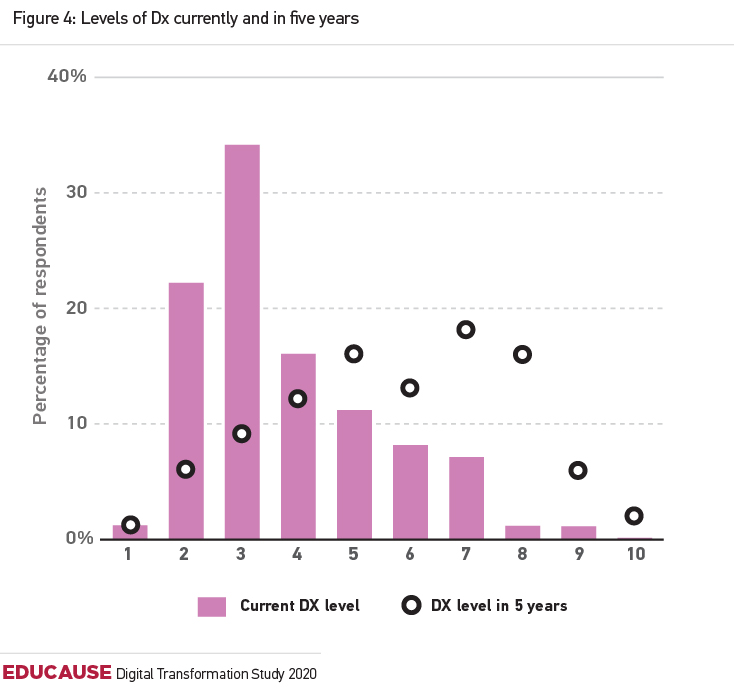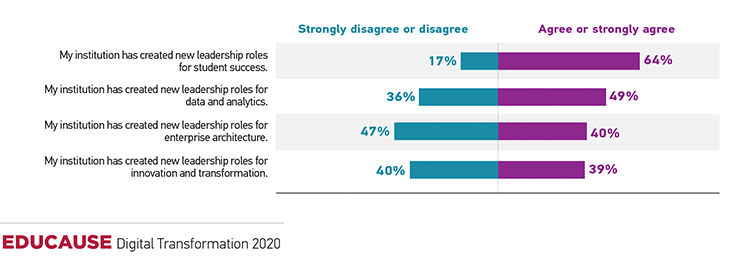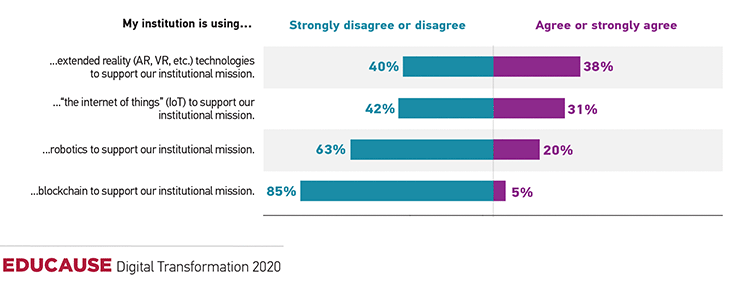Driving Digital Transformation in Higher Education
The EDUCAUSE Digital Transformation (Dx) research project is our first attempt to gather data on how the Dx phenomenon is playing out in higher education. The goal of this project is to enrich the collective understanding of Dx in higher education and explore the challenges and opportunities that lie ahead on the Dx journey. The first report is a broad view of Dx. The second report looks at the culture, workforce, and technology shifts that signal change is taking place.
Driving Digital Transformation in Higher Education: HTML | PDF | Infographic
Dx Signals: Culture, Workforce, and Technology Shifts: HTML
COVID-19 and the Acceleration of Dx
"Institutions that hadn't been considering Dx to any significant measure are now faced with shifting in that direction out of necessity. As we look toward a very uncertain future, we are already seeing evidence that institutions are prioritizing efforts that bring the greatest value and most tangible results, in a deep and coordinated fashion. They are, in effect, embracing digital transformation, intentionally or not, as a matter of survival."
—Karen Wetzel, Director, Community and Working Groups, EDUCAUSE
Key Findings
In August 2019, EDUCAUSE disseminated a survey to higher education IT leaders to explore their current experiences, attitudes, and practices related to Dx at their institution. Specifically, the survey presented respondents with a comprehensive set of questions focused on EDUCAUSE's three primary Dx indicators: culture shifts, workforce shifts, and technology shifts. These reports and infographic summarize the findings from our analyses of the responses we received from the 181 IT leaders who completed the survey. Our hope is that this report will not only shed light on the current status of Dx across the higher education landscape but also point readers to the horizons of that landscape and enable them to identify their next steps forward on the Dx journey at their institution.
Defining Dx
Digital transformation is "a series of deep and coordinated culture, workforce, and technology shifts that enable new educational and operating models and transform an institution's operations, strategic directions, and value proposition." Read more about the definition of Dx >
Institutional Engagement in Dx
Only 1 in 10 say their institution is currently engaged in digital transformation, but most are exploring Dx or preparing a Dx strategy. Read more about institutional engagement in Dx >
Institutional Levels of Dx
Currently, on average, institutional Dx remains considerably underdeveloped. Respondents are optimistic that progress will be made in the next five years, but those who have yet to start planning for Dx are already behind. Read more about the present and future levels of Dx at institutions >
Dx Signals: Culture Shifts
Campus leadership is struggling to rapidly respond to changing circumstances and new opportunities and to enable a seamless student experience . Read more about the culture shifts that signal Dx >
Dx Signals: Workforce Shifts
Institutions are creating new leadership positions in the areas of student success and data and analytics. Read more about workforce shifts that signal Dx >
Dx Signals: Technology Shifts
Institutions are not using emerging technologies such as blockchain and robotics to support their institutional mission. Read more about technology shifts that signal Dx >
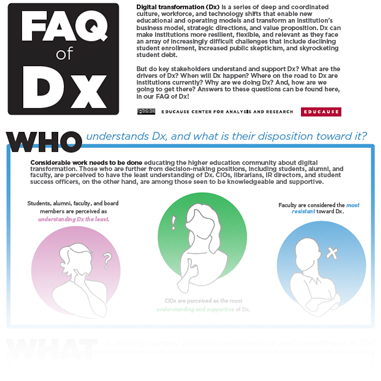
Infographic
View the FAQ of Dx infographic now.
